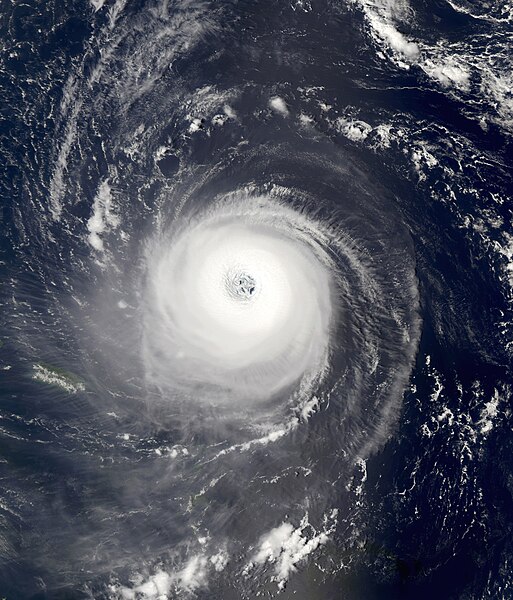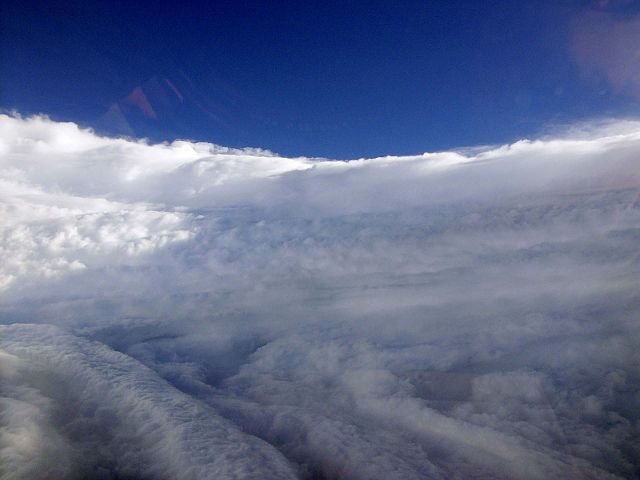An annular tropical cyclone is a tropical cyclone that features a normal to large, symmetric eye surrounded by a thick and uniform ring of intense convection, often having a relative lack of discrete rainbands, and bearing a symmetric appearance in general. As a result, the appearance of an annular tropical cyclone can be referred to as akin to a tire or doughnut. Annular characteristics can be attained as tropical cyclones intensify; however, outside the processes that drive the transition from asymmetric systems to annular systems and the abnormal resistance to negative environmental factors found in storms with annular features, annular tropical cyclones behave similarly to asymmetric storms. Most research related to annular tropical cyclones is limited to satellite imagery and aircraft reconnaissance as the conditions thought to give rise to annular characteristics normally occur over open water, well removed from landmasses where surface observations are possible.

Satellite image of Hurricane Isabel of 2003, displaying a large, circular, and symmetric eye, and symmetrical storm shape, which are characteristics of annular tropical cyclones. Isabel is also exhibiting a pinwheel eye, a rare feature found in some annular tropical cyclones.
Typhoon Surigae of 2021 displaying annular characteristics
Typhoon Noru of 2017, displaying most of annular characteristics
The eye is a region of mostly calm weather at the center of a tropical cyclone. The eye of a storm is a roughly circular area, typically 30–65 kilometers in diameter. It is surrounded by the eyewall, a ring of towering thunderstorms where the most severe weather and highest winds of the cyclone occur. The cyclone's lowest barometric pressure occurs in the eye and can be as much as 15 percent lower than the pressure outside the storm.
Hurricane Florence, seen from the International Space Station, showing a well-defined eye at the center of the storm
Hurricane Wilma with a pinhole eye
Detail of Hurricane Isabel's eye, as viewed from the International Space Station
The eye of Hurricane Katrina viewed from a hurricane hunter aircraft







